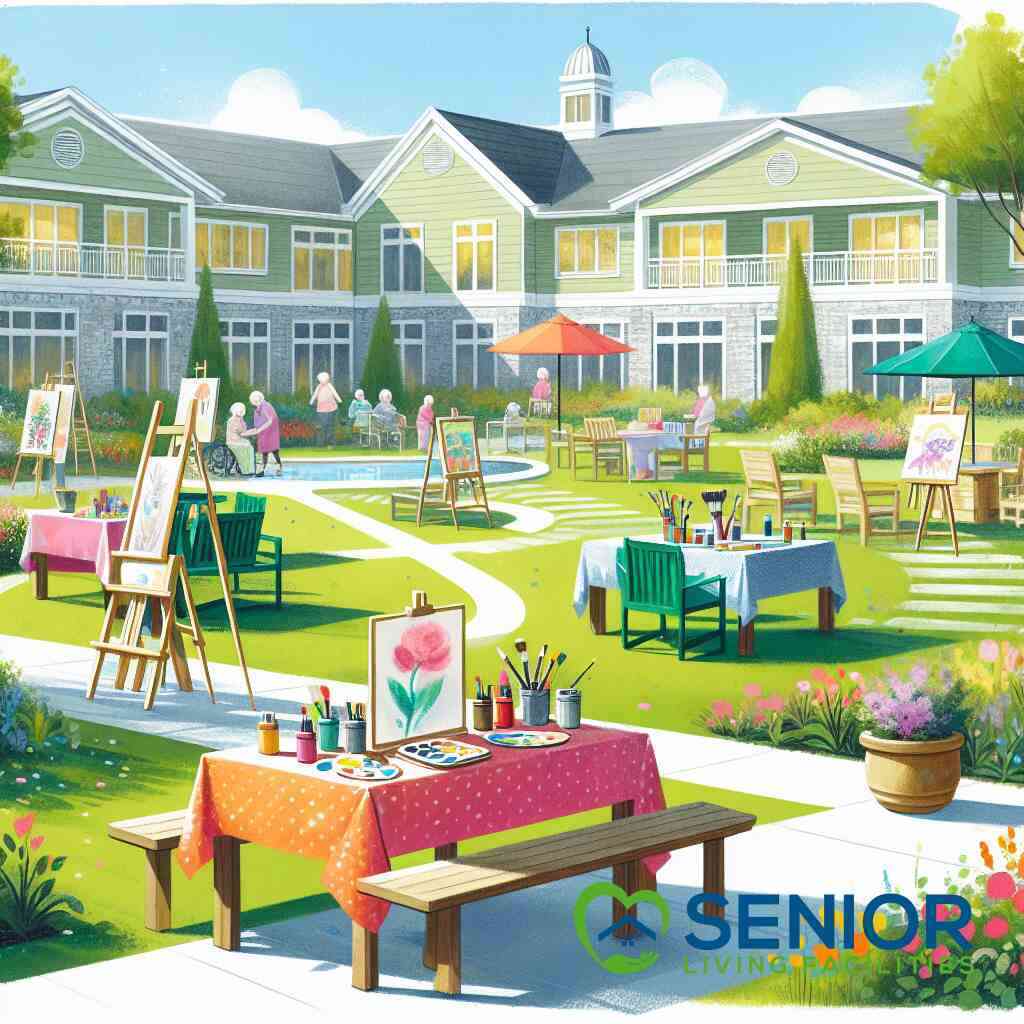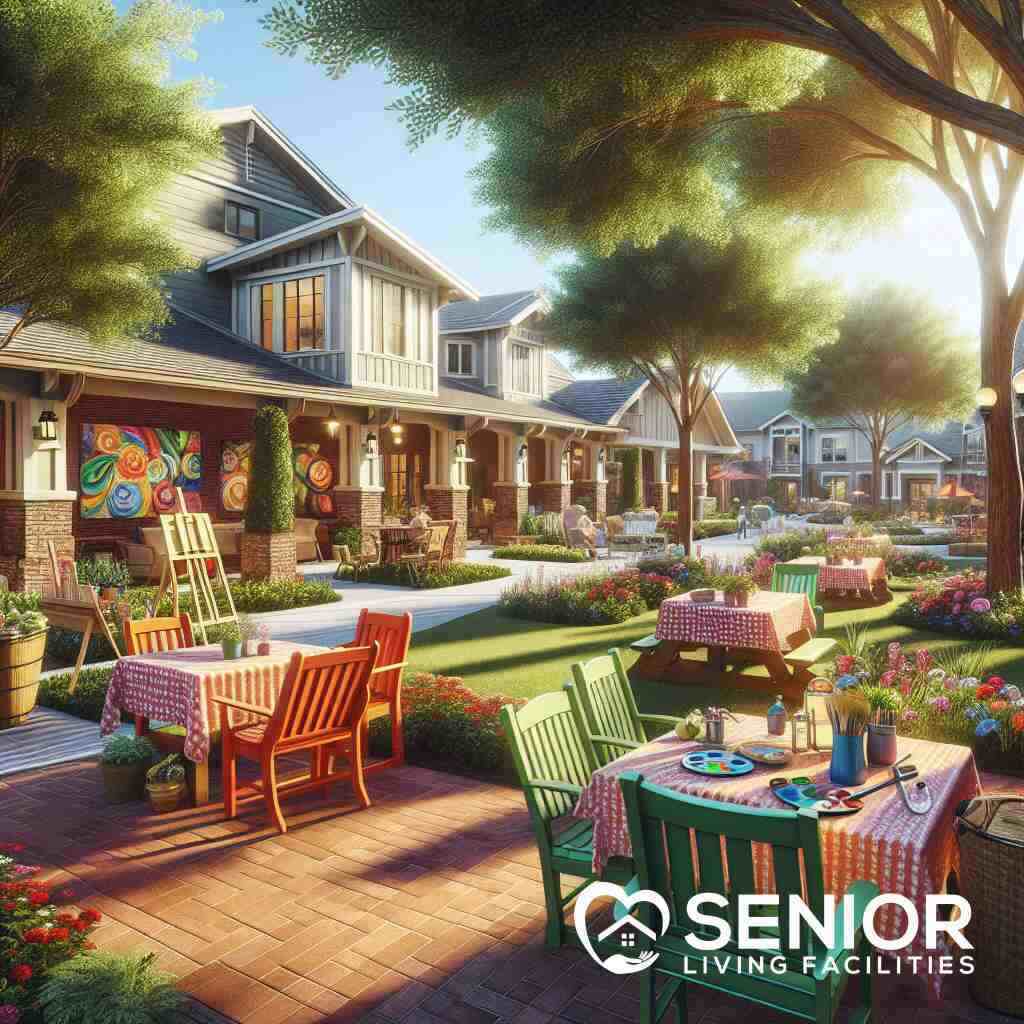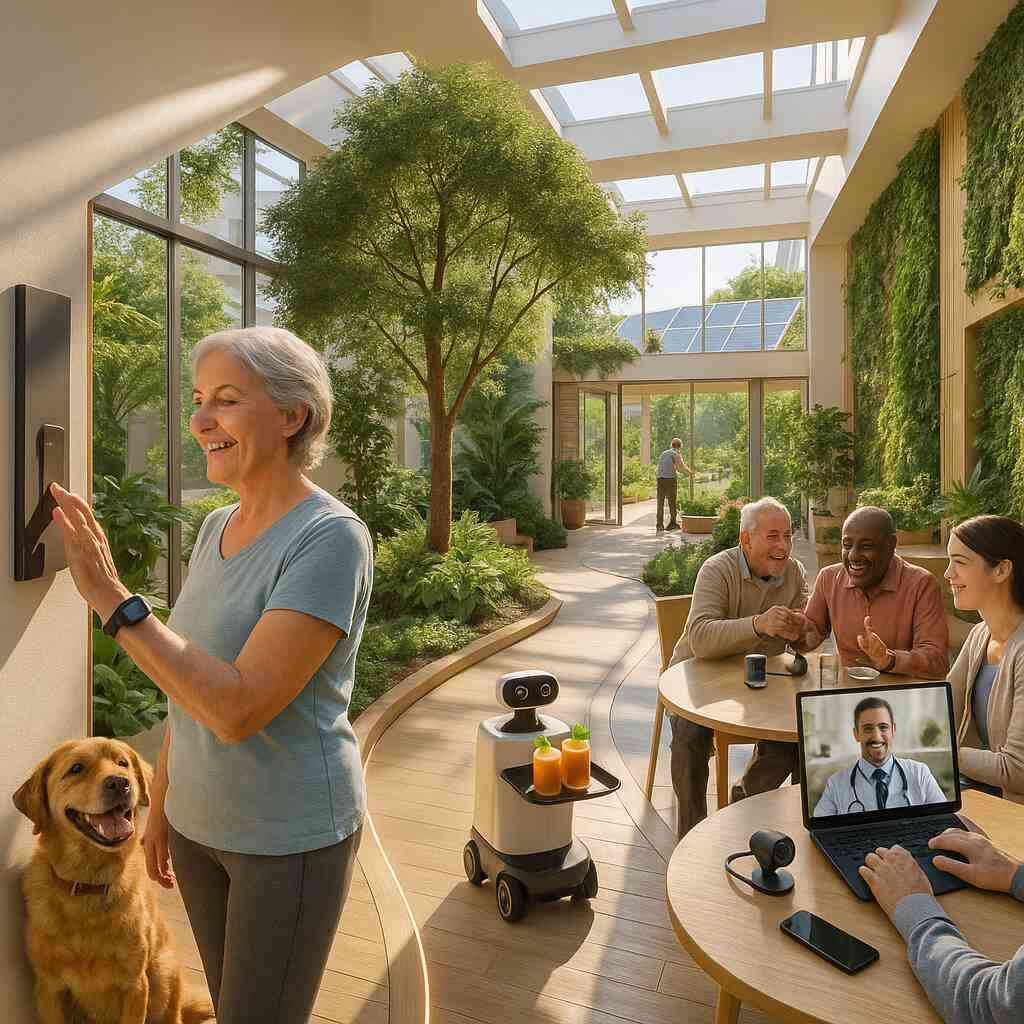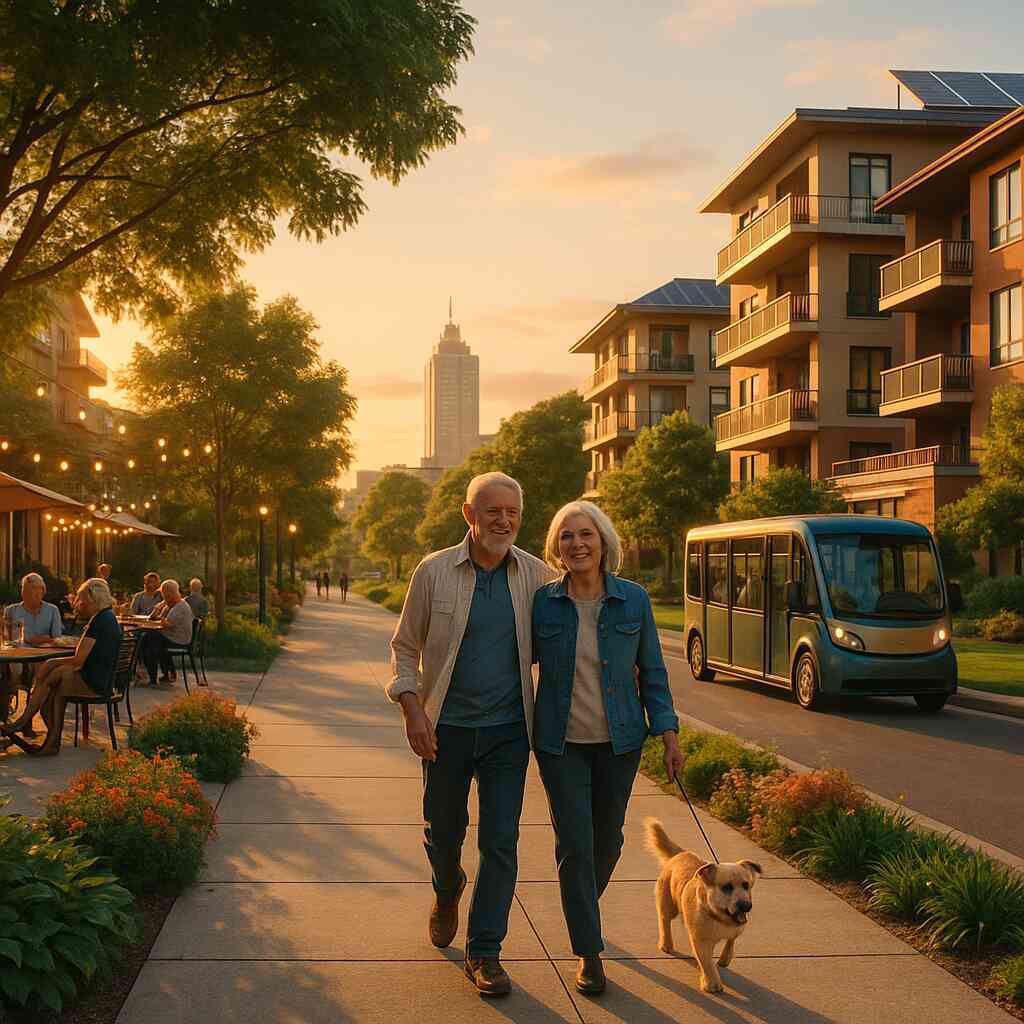
The Importance of Social Activities in Senior Living
September 10, 2024
Unlocking the Value of Social Activities in Senior Living
Understanding the role of social activities
Social activities play a pivotal role in enhancing the lives of seniors living in communities. Engaging seniors in social activities is not just about filling their calendars with events; it’s about creating meaningful connections, fostering a sense of belonging, and providing an avenue for personal growth and happiness. These activities range from simple group dining experiences to more elaborate social outings and themed events. They are essential in breaking the monotony of daily routines and serve as critical avenues for interpersonal interaction among residents. The inclusion of a wide range of social activities within senior living facilities caters to diverse interests, promoting a broader sense of community engagement and participation.
Comparing social opportunities in assisted living vs. nursing homes
The nature and scope of social activities vary significantly between assisted living facilities and nursing homes, primarily due to the differing levels of care provided. Assisted living facilities typically offer a more dynamic social calendar, as residents in these settings usually have a higher level of independence. Activities might include fitness classes, art workshops, local outings, and social clubs. In contrast, nursing homes catering to residents with more substantial medical needs might focus on more accessible, low-key social activities such as bingo nights, music therapy sessions, and storytelling hours to accommodate their residents’ abilities. Both types of facilities understand the importance of socialization for seniors and strive to tailor their programs to meet their residents’ physical and mental capabilities.
The impact of socialization on mental and physical health
The benefits of socialization for the elderly extend far beyond mere entertainment. Studies have shown that engaging in regular social activities can significantly impact both mental and physical health. For mental health, social interactions can reduce feelings of loneliness and isolation, decrease the risk of depression, and even contribute to a sharper cognitive function. Physically, being socially active promotes increased levels of physical activity, which can help manage or prevent chronic illnesses, improve sleep patterns, and enhance overall life expectancy. Thus, senior living communities that prioritize social engagement offer an invaluable service, helping residents maintain their health and well-being through a vibrant social life.
Exploring Social Activities Across the US
Senior living facilities in California: A hub for active seniors
California is renowned for its vibrant lifestyle, and senior living facilities in the Golden State are no exception, creating an ideal environment for active seniors. Communities in California prioritize outdoor activities, taking full advantage of the state’s pleasant climate. Activities range from walking clubs along the picturesque beaches to gardening groups that encourage seniors to engage with nature. These facilities also host yoga and Tai Chi classes outdoors, allowing residents to improve their flexibility and balance while soaking in the sun. The emphasis on physical well-being is complemented by social gatherings designed to foster community spirit, such as themed dinner parties and cultural nights, which celebrate the diverse backgrounds of residents. By integrating physical activities with social interaction, senior living facilities in California offer a holistic approach to senior wellness that resonates with the state’s overall lifestyle.
The unique social clubs in Florida’s senior living communities
In Florida, senior living communities take a unique approach by focusing on specialized social clubs that cater to a wide array of interests, making it an attractive destination for seniors seeking a vibrant community life. Social clubs in Florida’s senior communities range from book clubs and gardening societies to technology workshops and investment clubs. These clubs not only offer residents a chance to engage in their hobbies and interests but also provide a platform for learning new skills and meeting other residents with similar interests. The diversity of clubs ensures that every senior can find a group that resonates with them, promoting a sense of belonging and community. Florida’s approach to creating highly specialized clubs within its senior living communities highlights the state’s commitment to personal growth and community building among its senior residents.
Building community through events in New York senior facilities
Senior facilities in New York take a community-building approach by organizing events that not only entertain but also connect residents to the larger community around them. Events in New York senior facilities often include outings to Broadway shows, museum tours, and participation in local charity events, enabling seniors to stay engaged with the city’s rich cultural life and vibrant community. Such events offer residents opportunities to experience the diversity and energy of New York beyond the walls of their communities. Furthermore, by involving residents in charitable activities, these facilities foster a sense of purpose and contribution among seniors, enhancing their sense of self-worth and connection to the wider community. This emphasis on integration with the city’s cultural and philanthropic scenes sets New York senior living facilities apart, contributing to a dynamic and fulfilling social life for their residents.
How Senior Living Facilities Promote Social Engagement
The diversity of social programs in senior living facilities
Senior living communities understand the importance of a varied and engaging social calendar. With a focus on improving seniors’ quality of life through socialization, these facilities ensure that there’s something for everyone. From art classes to tech workshops and from group outings to one-on-one activities, the aim is to cater to the diverse interests and physical capabilities of all residents. This variety helps not only engage seniors in social activities but also maintain their mental acuity and physical health. Facilities often work with activity coordinators and take resident feedback into account to keep their programs fresh and relevant. By providing an array of options, senior living facilities encourage residents to explore new hobbies and rekindle old passions, fostering a vibrant, active community.
Creating inclusive environments for all seniors
Creating an inclusive environment is at the heart of fostering a vibrant social life within senior living communities. Recognizing the diverse backgrounds and abilities of their residents, facilities strive to offer activities that are accessible and enjoyable for everyone. This might include ensuring physical accessibility, providing support for hearing or vision impairments, and creating a welcoming atmosphere for residents from all walks of life. Communities often highlight activities that promote inclusivity, such as cultural heritage celebrations and multilingual events. Through these efforts, senior living facilities aim to eliminate barriers to participation, ensuring that every resident can find meaningful ways to contribute to and partake in community life. This inclusivity not only enriches the social fabric of the community but also reinforces the sense of belonging among residents.
Leveraging technology to enhance social interaction
In an age where technology plays a central role in communication, senior living facilities are finding innovative ways to incorporate digital tools into their social programming. From virtual reality experiences that take residents on a journey around the world to social media platforms that connect residents with their families and peers, technology is broadening the horizons for senior social engagement. Many facilities now offer tablet or computer classes that not only teach residents how to use these devices but also how to engage safely online. Video conferencing has also become a popular tool for enabling residents to attend events or connect with loved ones they cannot physically visit. By embracing technology, senior living facilities are not only enhancing the social experience within the community but also ensuring residents stay connected with the larger world, promoting happiness and reducing feelings of isolation among their senior populations.
The Benefits of an Active Social Life for Seniors
Improving seniors’ quality of life through socialization
Socialization plays a critical role in enhancing the quality of life for seniors, offering them opportunities to connect with others, share experiences, and engage in meaningful activities. Senior living communities are acutely aware of these benefits, endeavoring to create vibrant social environments that encourage interaction among residents. Through various social activities, seniors find themselves part of a community, leading to increased satisfaction with their living situation. These interactions help seniors maintain a sense of identity and purpose, significantly contributing to their overall happiness and well-being. Senior living facilities recognize the importance of socialization, prioritize activities of daily living in senior living communities, and ensure residents have ample opportunities to engage in social interactions that enrich their lives.
Reducing the risks of loneliness and depression
An active social life is a powerful antidote to loneliness and depression, two issues that disproportionately affect the senior population. In senior living communities, the programming is designed to combat these challenges by fostering robust social networks and providing a calendar full of engaging events and activities. By participating in group activities, seniors build relationships with their peers, which can mitigate feelings of isolation. Regular social interactions also give residents a sense of belonging, which is crucial for mental health. Moreover, the supportive environment in these communities encourages residents to express themselves and seek help when they’re feeling down, assuring them that they are not alone. This sense of community and shared experience is instrumental in reducing the risks of loneliness and depression, reaffirming the vital role of social activities in promoting mental health among seniors.
The role of community events in promoting happiness and wellness
Community events within senior living facilities are more than just opportunities for residents to pass the time; they are integral to promoting happiness, wellness, and a sense of unity among the community members. These events, whether they are holiday celebrations, exercise classes, cultural excursions, or educational talks, provide varied and enriching experiences that cater to the diverse interests of seniors. Participating in these activities can lead to improved physical, mental, and emotional health, as residents find joy in shared experiences and learn new things. Additionally, these community gatherings serve as the perfect backdrop for creating lasting memories and forging new friendships, essential components of a fulfilling senior lifestyle. Through carefully curated events that emphasize experiential learning and social connection, senior living communities play a critical role in promoting happiness in senior housing through community events and blog posts, ultimately enhancing the quality of life for their residents.
Designing Engaging Social Activities for the Elderly
Best practices for engaging seniors in social activities
Engaging seniors in social activities requires a thoughtful approach that considers the diverse interests, abilities, and health conditions prevalent among the elderly. Best practices involve creating a varied calendar of events that cater to both group and individual preferences, ensuring every resident has the opportunity to participate. It’s vital to engage residents in the planning process, allowing them to voice their ideas and preferences. This inclusive strategy not only increases participation rates but also enhances the sense of community within the facility. Furthermore, integrating activities that are both enjoyable and beneficial to seniors’ health, such as gentle exercise classes or cognitive games, promotes overall well-being. Regularly scheduled events provide something for residents to look forward to, breaking the monotony of daily routines and fostering a dynamic living environment.
Innovative recreational programs in modern senior housing
Modern senior housing is redefining recreational activities, embracing innovation to meet the evolving interests of today’s seniors. From virtual reality experiences that allow residents to ‘travel’ to far-off places to interactive gaming systems designed to improve physical fitness and mental agility, the realm of possibilities is vast. Cooking classes featuring cuisine from around the world cater to the adventurous palate while providing a communal activity that stimulates social interaction. Environmental initiatives, such as community gardening and recycling projects, engage residents in sustainable practices, promoting a sense of accomplishment and contribution to the wider community. By incorporating technology and forward-thinking concepts, senior housing can provide engaging, meaningful activities that resonate with a new generation of seniors, ensuring their leisure time is as enriching as it is enjoyable.
Fostering friendships and inclusivity in senior communities
Creating a community atmosphere where friendships can flourish involves more than just organizing social events; it’s about cultivating an environment of inclusivity and respect. Senior living facilities can foster friendships by facilitating small group meetings based on shared interests or life experiences, encouraging deeper connections among residents. Diversity and inclusion programs can help educate and celebrate the unique backgrounds and stories within the community, bridging gaps and building mutual understanding. Mentorship programs pairing longer-term residents with newcomers can also promote bonds of friendship, making new residents feel welcomed and valued. Recognizing and celebrating personal achievements and milestones within the community further strengthens these ties, showing residents they are part of a caring and supportive family. By emphasizing inclusivity and interpersonal connections, senior living communities can become places where friendships thrive, significantly enhancing the quality of life for all residents.
Case Studies: Successful Social Programs in Senior Living Facilities
Highlighting Exemplary Social Engagement in Assisted Living Locations
Assisted living facilities are increasingly recognizing the integral role social activities play in the lives of their residents. One standout example comes from a facility in the Pacific Northwest, where a comprehensive program called “Art & Memories” was introduced. This initiative encourages residents to participate in painting and storytelling, using art as a medium to reflect on their lives and share personal stories with others. The results have been profound, with participants showing enhanced cognitive functions and a deeper sense of community connection. The program not only serves as recreational therapy but also strengthens the bonds between residents, staff, and family members, highlighting the vast potential of well-thought-out social engagement activities in assisted living settings.
Community Engagement Triumphs in Senior Living Near You
In a bustling urban retirement community, seniors have found a unique way to connect with the younger generation, fostering mutual respect and learning. Through a program called “Bridging Generations,” senior residents collaborate with local high schools and colleges to create intergenerational projects, ranging from technology workshops to environmental initiatives. This partnership has served to debunk stereotypes and promote a healthy exchange of ideas and values. More importantly, the initiative has given seniors a sense of purpose and belonging as they contribute to their broader community in meaningful ways. By encouraging active participation in social causes and promoting intergenerational learning, this program underscores the importance of external community engagement in enhancing the lives of senior residents.
Evaluating the Impact of Social Activities on Long-Term Care Residents
Long-term care facilities face unique challenges in promoting social interaction among their residents, many of whom have significant health and mobility issues. A case study from a renowned long-term care facility unveils how targeted social programs can dramatically improve the quality of life for these residents. The facility introduced a diverse range of activities tailored to the capabilities of its residents, including adaptive gardening, pet therapy sessions, and personalized music programs. Over time, these activities have not only helped in maintaining physical and mental health but also in reducing feelings of isolation and depression among the residents. Detailed assessments have shown marked improvements in mood and overall well-being, suggesting that even in settings with higher care needs, robust social programs can play a crucial role in enhancing residents’ lives. This case study serves as a powerful testament to the impact of adapting social activities to meet the specific needs of long-term care residents, ensuring they continue to find joy and fulfillment in their daily lives.
These case studies exemplify the transformative power of social engagement in senior living environments. Whether through creative art programs in assisted living locations, bridging generational gaps in retirement communities, or tailored activities in long-term care facilities, it’s clear that a focus on meaningful social interactions can significantly enhance the quality of life for seniors. As we look towards the future, the continued development and implementation of innovative social programs will be key in fostering vibrant, supportive communities for our aging population.
Nurturing an Engaging Social Environment in Senior Living Facilities

The importance of staff and resident involvement in social activities
Creating a vibrant and engaging social environment within senior living facilities hinges on the active involvement of both staff and residents. Staff play a crucial role in organizing, facilitating, and encouraging the participation of residents in various activities. Whether it’s arranging outings, leading exercise classes, or hosting social mixers, their enthusiasm can significantly impact residents’ willingness to engage. Equally important is fostering a sense of ownership among residents regarding their social life. Encouraging them to propose and lead activities not only promotes a more diverse social calendar but also boosts their confidence and sense of belonging. Facilities that excel in this area often have a dynamic, cooperative atmosphere where the lines between staff and residents blur, united by a shared goal of enriching the community’s social fabric.
How to create a sustainable social engagement program
Developing a sustainable social engagement program requires strategic planning, creativity, and flexibility. First and foremost, understanding the interests and needs of the resident population is key. This can be achieved through surveys, feedback sessions, and trial periods for new activities. Incorporating a range of events that cater to different levels of mobility and health ensures that all residents have opportunities to participate. Furthermore, leveraging partnerships with local organizations, schools, and businesses can bring fresh ideas and resources into the community, enriching the program. Another critical aspect is the ongoing training of staff to recognize the importance of social activities and equip them with the skills to lead them effectively. Ultimately, sustainability means adaptability-regularly evaluating the program’s impact and being willing to adjust based on feedback and changing needs is essential for long-term success.
Monitoring and adapting social activities for continuous improvement
Ensuring the continued success and relevance of social programs in senior living facilities demands diligent monitoring and a willingness to adapt. This involves regular assessment of participation rates, resident satisfaction, and the physical and mental health impacts of social activities. Soliciting direct feedback from residents through surveys or focus groups provides invaluable insights into their preferences and suggestions for improvement. Additionally, staying informed about trends and innovations in senior social programming can inspire new activities that keep the social calendar fresh and engaging. Effective monitoring also means recognizing when activities are no longer meeting residents’ needs or interests and being ready to phase them out in favor of more appealing options. By embracing a culture of continuous improvement, senior living communities can ensure their social programming remains a cornerstone of their residents’ happiness and well-being.
In stressing the importance of social activities in senior living, facilities underscore their commitment to enhancing the quality of life for seniors. Through dedicated staff involvement, the creation of sustainable engagement programs, and the continual monitoring and adaptation of activities, senior living communities can cultivate an environment where every resident finds joy, companionship, and a true sense of home. As highlighted in the senior living amenities that matter most in the 2024 blog post, having a rich social life is a key component of overall satisfaction for those in senior living, making the efforts to nurture these activities more important than ever.
Frequently Asked Questions
Question: How do Senior Living Facilities ensure the quality and variety of social activities in senior living communities?
Answer: At Senior Living Facilities, we understand the profound impact that diverse and engaging social activities have on the lives of seniors. Our commitment is to provide a rich array of social events, from fitness classes and art workshops to community gatherings and group outings. We partner with senior living communities that prioritize an active social calendar, ensuring that every resident finds activities that resonate with their interests and abilities. Each community is vetted to ensure they offer not just housing but a vibrant, fulfilling lifestyle for seniors, emphasizing the benefits of social activities for the elderly as a cornerstone of wellness and happiness.
Question: What makes socialization for seniors so important, and how is this integrated into the offerings at Senior Living Facilities?
Answer: Socialization plays a crucial role in enhancing seniors’ mental and physical health, reducing the risks of loneliness, depression, and cognitive decline while promoting a sense of belonging and purpose. At Senior Living Facilities, we recognize these benefits and select senior living communities that actively promote social engagement. Our listed facilities offer a wide range of social programs, from senior social clubs to community events, ensuring that every resident has the opportunity for meaningful interaction and engagement. By fostering an environment of active social life in senior years, we aim to improve the overall quality of life for residents in our communities.
Question: Can you give examples of the types of social activities that are available in assisted living locations through Senior Living Facilities?
Answer: Certainly! Our partnered assisted living locations offer a variety of activities tailored to meet the diverse interests of our residents. This includes physical activities such as Tai Chi and yoga, creative pursuits like painting classes and craft workshops, and social gatherings such as movie nights, cultural dinners, and local outings. We also support the creation of specialized senior social clubs, enabling residents to connect over shared interests. Our goal is to ensure that there are engaging and enjoyable options for every resident, fostering a vibrant and connected community atmosphere.
Question: How does the blog post ‘The Importance of Social Activities in Senior Living’ reflect the philosophy and services provided by Senior Living Facilities?
Answer: ‘The Importance of Social Activities in Senior Living’ underscores our philosophy at Senior Living Facilities that a vibrant social life is essential for the well-being and happiness of seniors. The blog post highlights the comprehensive approach we take in selecting senior living communities, which includes a strong emphasis on meaningful social engagement and the provision of a wide array of social activities and events that cater to the diverse needs and interests of seniors. This reflects our commitment to enhancing seniors’ quality of life through socialization, an integral part of the services and support we provide to families and individuals seeking the best senior living options.
Question: How do Senior Living Facilities promote inclusivity in social activities within senior living communities?
Answer: Inclusivity is at the heart of our approach to promoting a fulfilling social life within senior living communities. We advocate for social programs that are accessible to residents from all backgrounds and with varying abilities. This includes organizing culturally diverse events, facilitating activities that accommodate physical limitations, and offering support for seniors with sensory impairments. We aim to ensure that every resident, regardless of their health status or cultural background, can engage fully in community life. This emphasis on inclusivity helps in building a supportive and welcoming environment for all residents, reinforcing our dedication to fostering friendships and a strong sense of community in senior living facilities.



